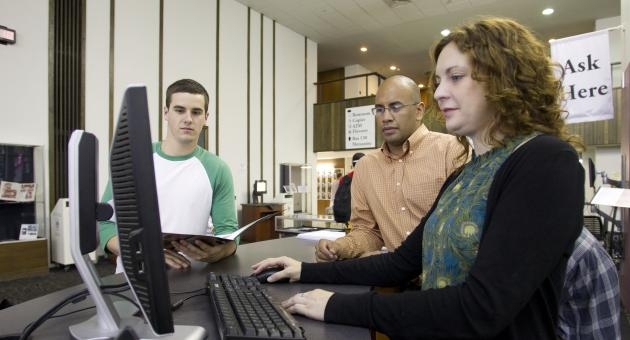A drumroll please: Top 10 tips for better student research

We are naturally attracted to top 10 lists — top 10 beaches, top 10 websites — because they are easy to digest. Such was the impetus for Temple librarians Krystal Lewis, Thomas Heverin, Susan LaValley and Rick Lezenby to create 10 ways to improve student research, a guide for faculty based on findings from a national study of college students’ research skills, behaviors and challenges in the digital age.
The study, Project Information Literacy (PIL), based at the University of Washington, validated what librarians are experiencing: students are overwhelmed with the amount of information available to them; they are time-challenged; they don’t yet know how to use the vast research resources that are available; and they struggle to critically evaluate the quality of content.
Hence, the first tip on the list: Encourage students to consult with a librarian. This might seem obvious, but PIL found that only 13 percent of research assignments explicitly recommended working with a librarian and 80 percent of students said they rarely, if ever, sought help from a librarian.
Temple was one of 10 campuses nationwide that took part in PIL’s survey of student research habits. After reviewing the results, Lewis and her colleagues decided the best way to tackle the problems revealed by the study was to cull the solutions and to target faculty.
“People are attracted to a numbered list because it tells them you’ve already distilled the information,” said Steven Bell, associate university librarian. “There was so much information in the PIL report that we wanted to make it as succinct as possible.”
The tips are targeted to faculty because they hold the most sway with students. Working through faculty was also the most efficient way to reach students at a university the size of Temple.
The librarians hope that faculty will incorporate the practices suggested by the tips into their teaching and assignments, such as tip no. 3: Suggest specific databases or other library resources by name to students.
“When creating a research assignment, it helps when professors are very specific about the resources they want their students to use,” said Bell. “They should include the name of the librarian who is the subject specialist. Very few do and it leaves the students wondering.”
Librarian Thomas Heverin, co-author of the 10 tips, specializes in science and engineering. He sees a lot of students go straight to Google rather than academic resources when they first embark on research. To better guide them, he’s been going to classes and getting to know students early in their college careers.
“It’s important for students to be able to evaluate specific research resources as they get deeper into their majors,” he said.
After repeated exposure to library resources and research methods, Heverin has been happy to see students better able to identify good science resources, which ultimately eases a lot of frustration.
The PIL findings and the resulting efforts to improve student research come at a good time.
“Libraries have been changing because of the internet, so there’s a need to figure out how to design our resources to meet the new needs,” said Lewis.
Further, good research skills aren’t just needed to survive college.
“Research is an important skill to have for life-long learning. We need to know where to look for information about medical issues or job searches, for example, and how to judge the value of that information,” said Lewis.
The librarians will roll out their 10 tips at workshops for faculty next month (www.temple.edu/tlc/events/main.htm or www.temple.edu/tlc/) and plan to create a list of tips for students.
For more information on PIL, visit projectinfolit.org/.